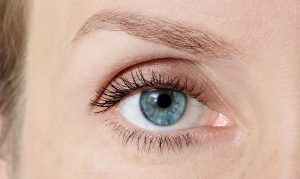The eyelid abnormality affects young and old. It has a familial tendency.

Understanding Eyelid Abnormalities: Upper and Lower Lid Concerns
In the upper eyelid, the common abnormality is a loss of the supratarsal crease with the folding of excess skin, droopiness of the lateral brow and, to some degree, an extension of the anterior fatty component. There can also be medial fat herniation. In the oriental eyelid, the main abnormality is the droopiness of the anterior lamellar fat because of the anatomical variation.
In the lower eyelid, however, the sausage-shaped eyelid bags cause malar palpebral groove and tear trough deformities. There will be a loss of canthal definition due to ligamentous laxity.
Precision and Expertise: Our Approach to Upper Blepharoplasty
We carry out a standard open sky upper blepharoplasty and we always carry out a unique suturing technique where the inferior part of the circumferential orbicularis oculi muscle is anchored to the levator aponeurosis. This will recreate a well-defined supratarsal crease. In patients who need it we will also carry out a lateral brow lift which again is our technical exercise. The medial fat herniation is cauterised simultaneously.
Our Unique Approach to Lower Eyelid Procedures
In the lower lid, we carry out a skin flap technique with septal reset as opposed to excision of the fat. We firmly believe that excision of the fat will cause hollowing of the lower eyelid area which would later give a sunken appearance. We simultaneously carry out orbital muscle plication in order to strengthen the middle lamellar of the lower lid.
The aim here is to improve the contour without losing the volume, minimize the skin excision and maximize anterior and middle lamellar strength.

Leave a Reply